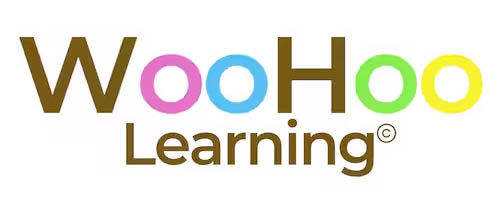The sea turtle is an extraordinary living being that can travel up to 16,000 km in a year. Moreover, from the moment they are born on the shores of the sea, they embark on the famous “race-to-the-sea,” during which they enter the ocean for the first time, overcoming numerous obstacles such as predators and strong waves. Another fascinating fact about sea turtles is that when it’s time to lay their eggs, they return to the same beach where they were born. For all these reasons and many more, teaching our students about the life of the sea turtle is a very enriching experience. Unfortunately, six of the seven existing species are endangered. Therefore, our role as educators is also to raise awareness about the importance of protecting these animals and the environment.
If you, like me, are passionate about the Montessori methodology, its approach to teaching, and its learning environment, you’ll love working with my sea turtle unit. The way I use my units with my students is very experiential—I bring real objects into the classroom so they can touch, observe, and explore them. This approach, which focuses on the child, encourages learning through experimentation and discovery. Next, I’ll explain how to use this unit with your students.
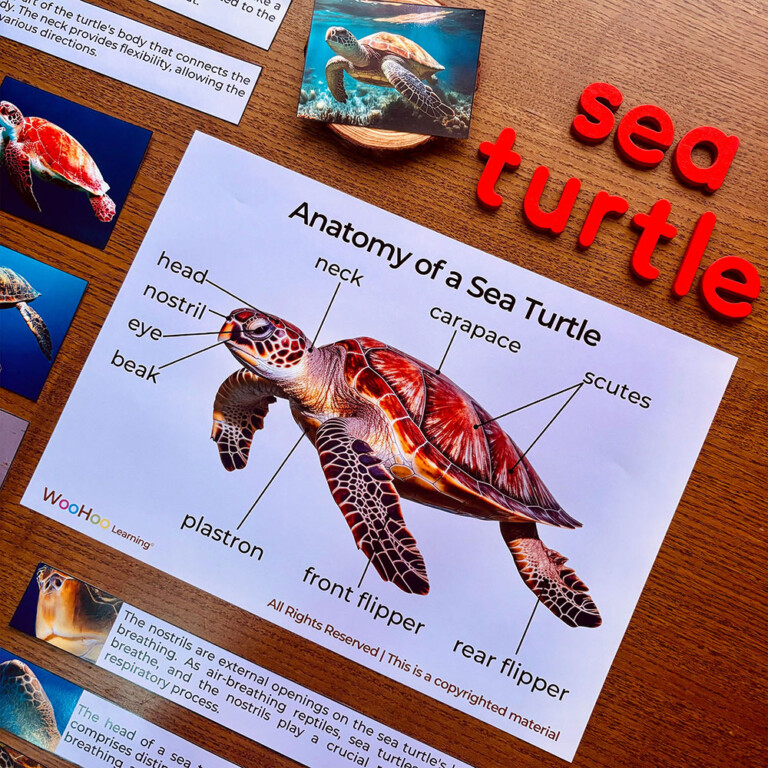
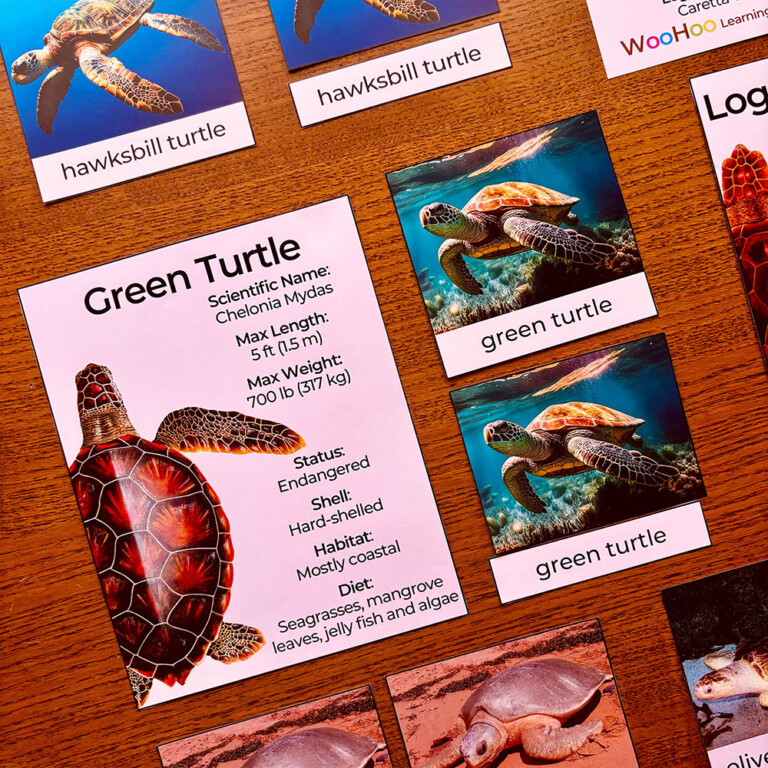
First, I recommend starting with the sea turtle anatomy section. If possible, bring a sea turtle toy or figurine (or more) into your class so children can examine it up close—touch it, explore it, and engage with it. Before sharing any information, ask them some guiding questions: “What characteristics do you know about the sea turtle?”, “Do you know how it differs from the land turtle?”, “Where does the sea turtle live?”.
After the hands-on exploration of the sea turtle figurine, you can move on to learning about the sea turtle parts: head, eye, nostril, beak, neck, carapace, scutes, plastron, front flipper, and rear flipper. The labeled poster will be a great tool to introduce these parts. Then, you can use the 3-part cards to help students work on vocabulary and specific definitions.
"At some given moment it happens that the child becomes deeply interested in a piece of work; we see it in the expression on his face, his intense concentration, the devotion to the exercise"
The Discovery of the Child, Maria Montessori
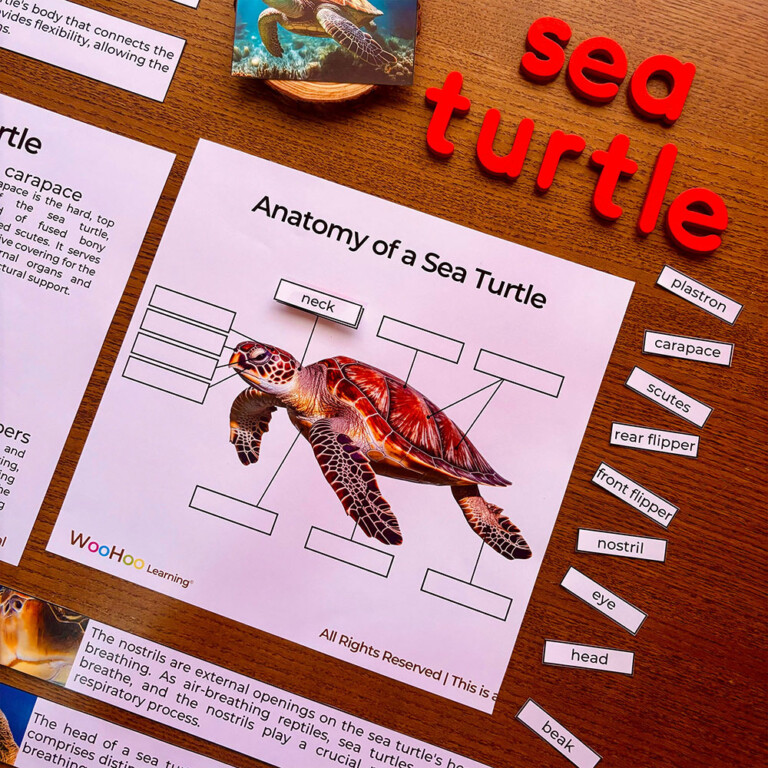
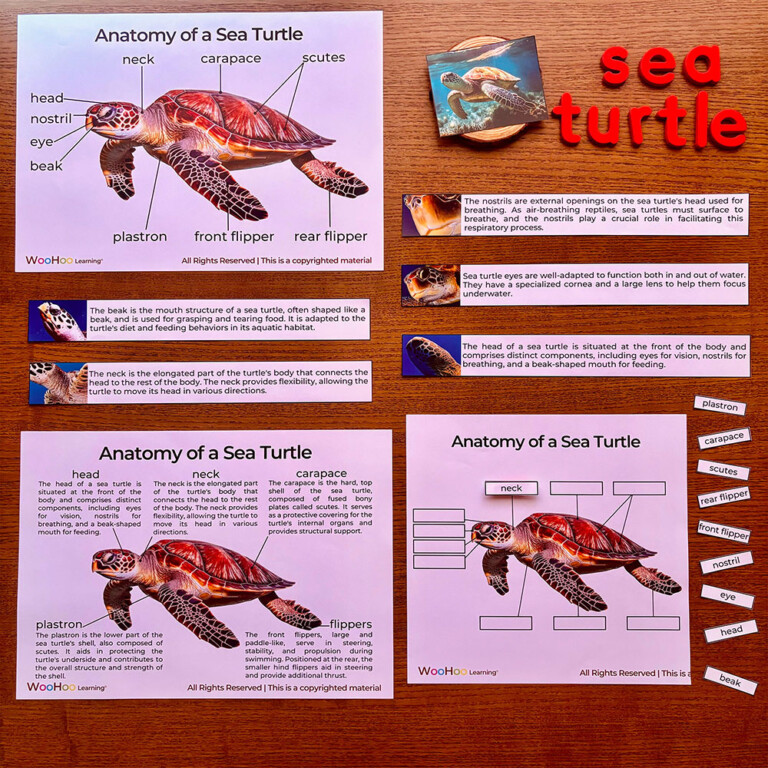
Once the children are familiar with the sea turtle and its anatomy, it’s time to delve into the life cycle of the sea turtle. You can start this section by asking questions like “Do you think the sea turtle is born on land or in the sea?”, “Do you know if they are oviparous or viviparous?”, “How big do you think a sea turtle can grow?”. These questions will help students prepare to learn about the six stages of the sea turtle life cycle: egg laying, egg hatching, race to the sea, juvenile sea turtle, sub-adult sea turtle, and adult sea turtle. To support this learning, you can use the definition cards, the 3-part cards, and the 4-part cards with definitions.
Here are some of the elements I’ve used to accompany this unit and their purchase links, in case you’re interested:
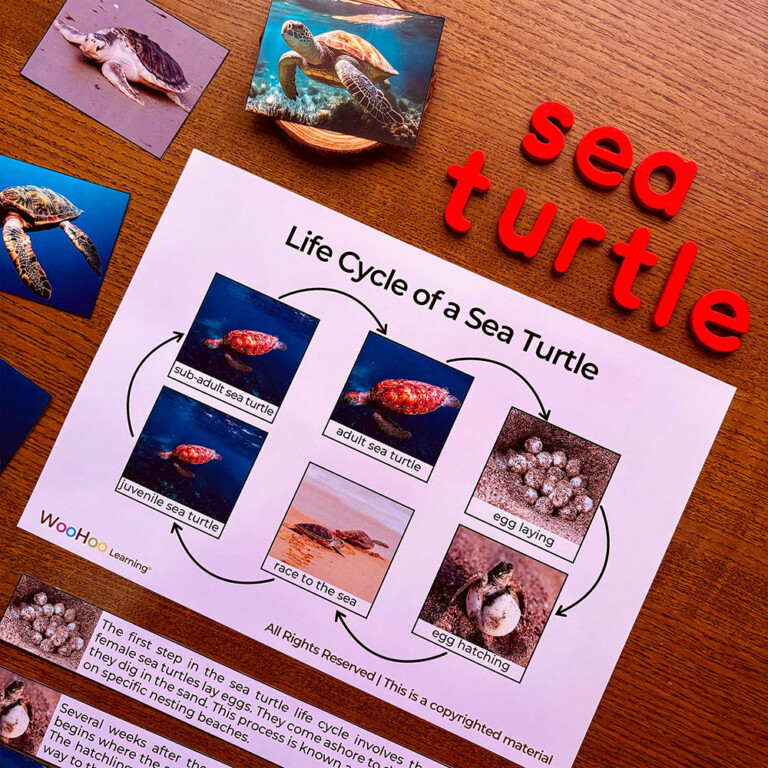
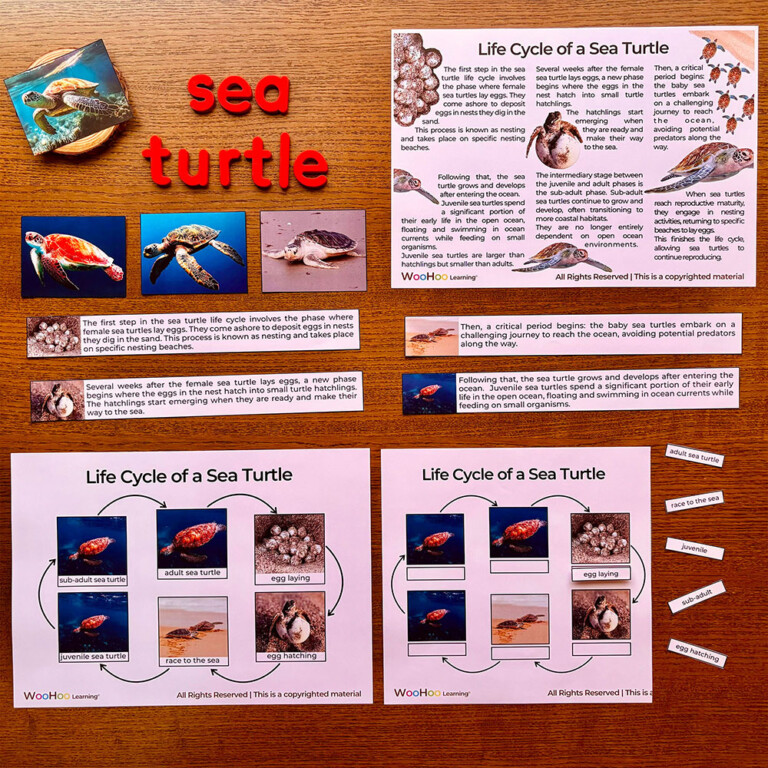
After understanding the anatomy and life cycle of the sea turtle, the children will be ready to learn about the seven different species of sea turtles. The species of sea turtles are: Flatback turtle, Hawksbill turtle, Olive Risdley, Kemp’s Ridley, Loggerhead turtle, Green turtle, and Leatherback turtle. As always, I suggest starting with some thought-provoking questions: “How many species of sea turtles do you think there are?”, “Do you think they all live in the same places or in different ones?”, “Do you think some of the species are endangered?”. You might also bring different types of figurines, allowing the students to touch, experiment with, and hypothesize about how it’s made.
Once our students have learned about the anatomy of the sea turtle, the life cycle of the sea turtle, and the seven different species, we can move on to activities included in the unit or explore more about this animal. For instance, you could delve into interesting facts about sea turtle, information about the biggest sea turtle, the impact of plastics, or the egg laying process.
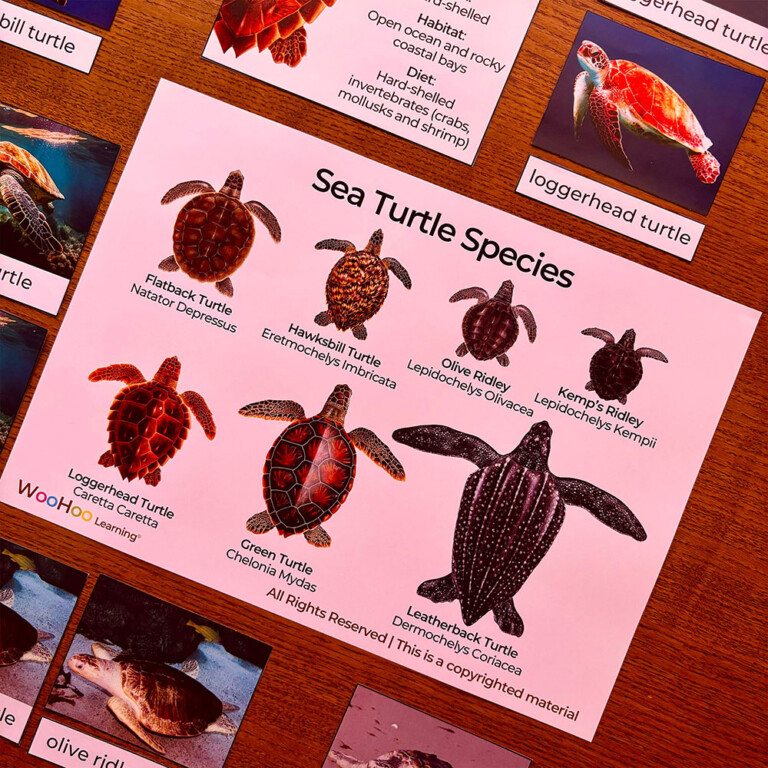
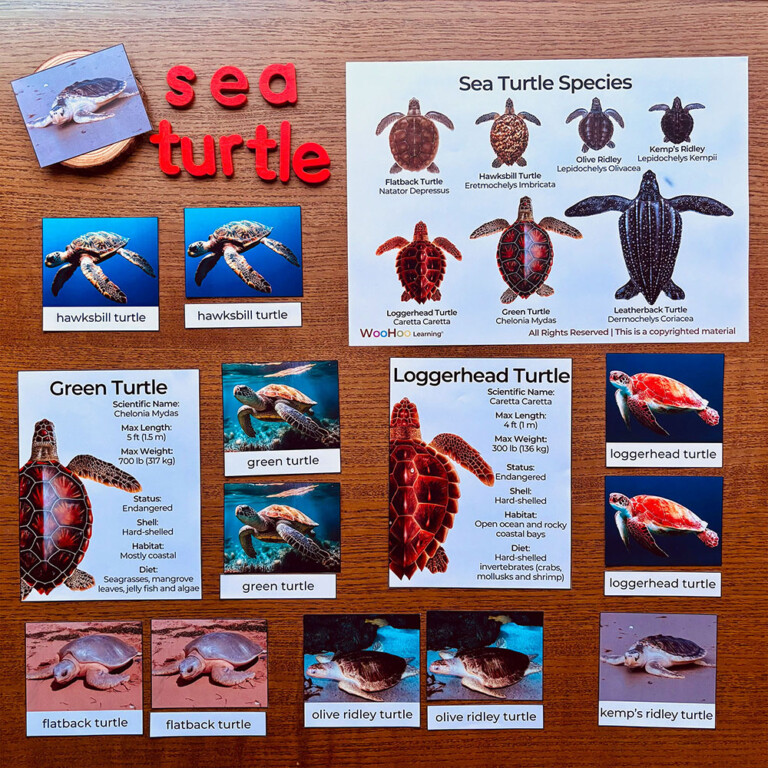
If you’re interested in purchasing my sea turtle unit study, you can find direct access to it below. If you only want a part of the unit, don’t worry, that’s also possible. In total, there are 4 different units available: the complete sea turtle unit, the sea turtle life cycle unit, the sea turtle anatomy unit, and the sea turtle species unit.
The complete sea turtle unit consists of 34 pages and contains all kinds of information about sea turtles, including interesting facts, life cycle, anatomy, and different species information. The sea turtle anatomy unit has 11 pages and includes posters, 3-part cards, vocabulary cards, and activities. The sea turtle life cycle unit has 10 pages and includes posters, 3-part cards, vocabulary cards, and activities. Finally, the sea turtle species unit has 11 pages and includes 3-part cards, display posters, and informational and fact cards.
*If you feel more comfortable making your purchase on well-known platforms, you can also find my products on other e-commerce sites. Here are the links to my Etsy store and my Teachers Pay Teachers store.
